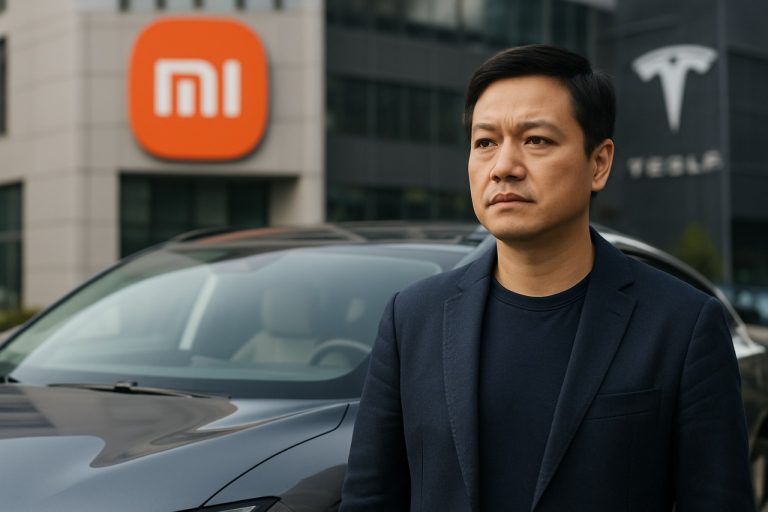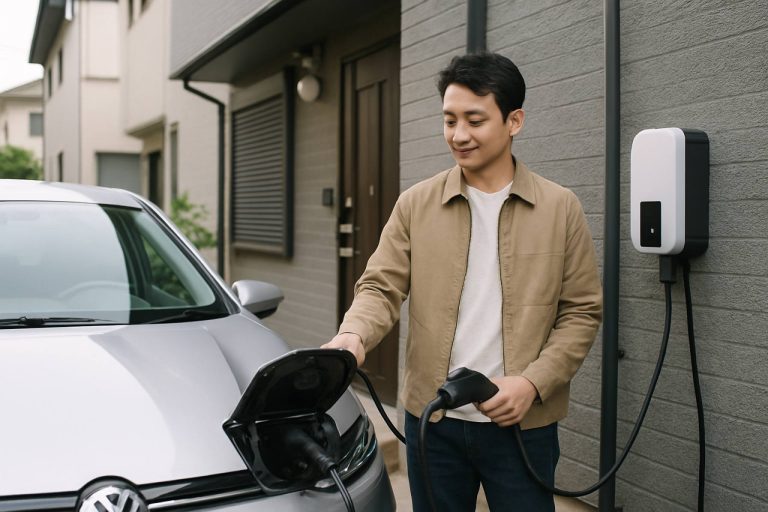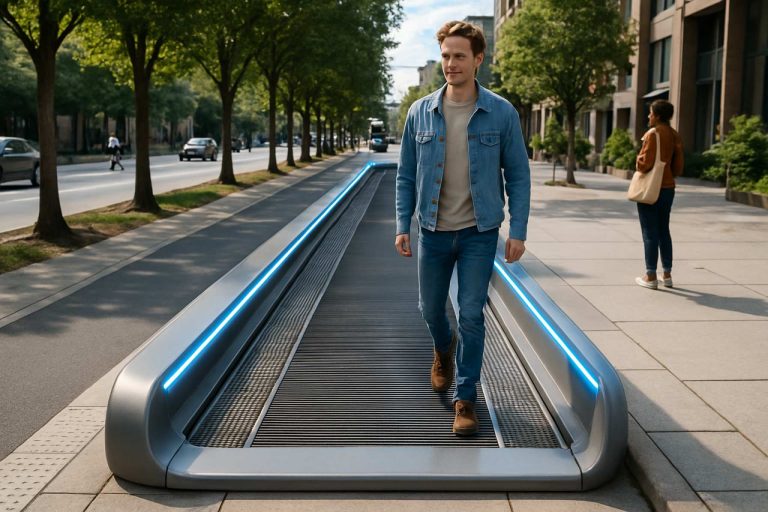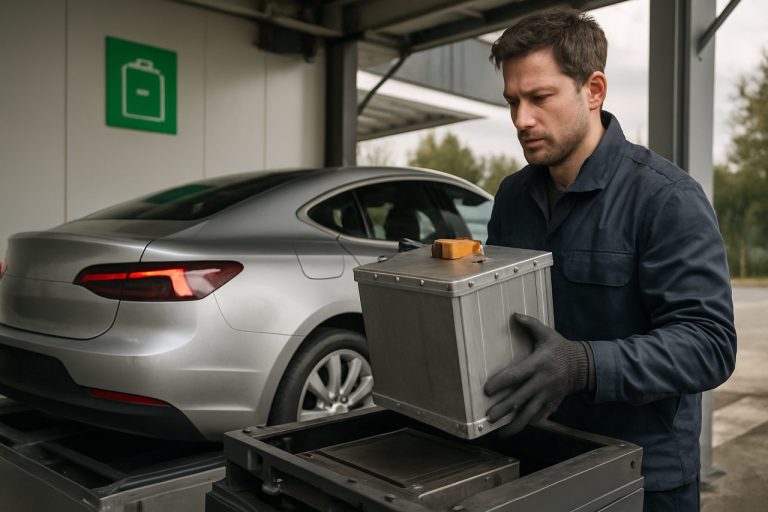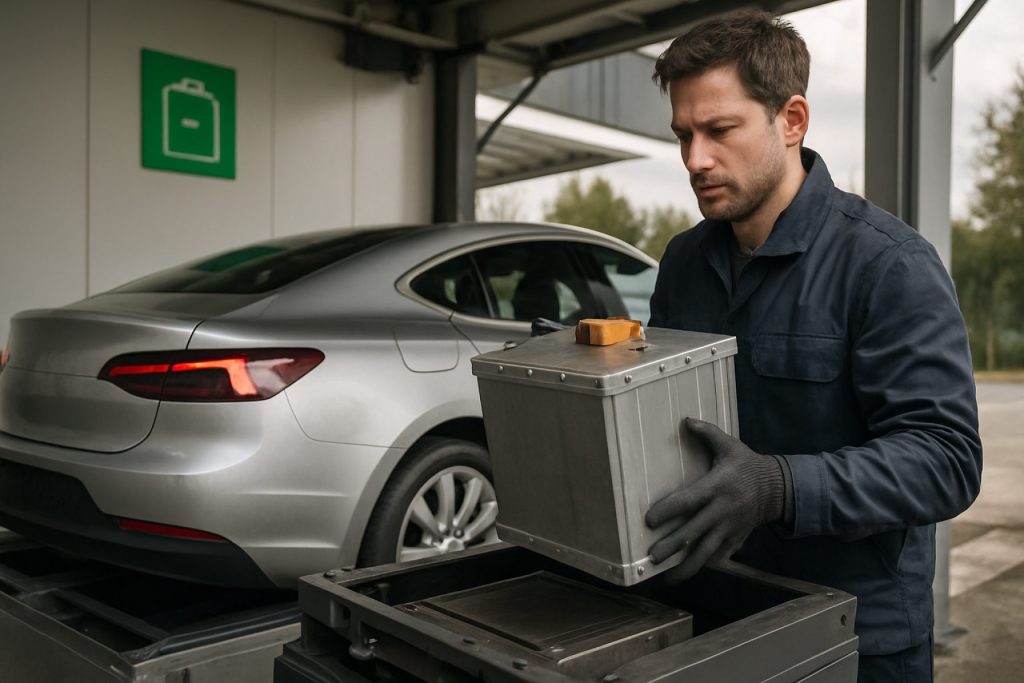
- Battery-swapping technology allows electric vehicles to exchange depleted batteries for fully charged ones in as little as 100 seconds, eliminating charging wait times.
- Chongqing, China leads adoption, with taxi fleets using CATL’s modular “Choco-SEB” batteries and 34 swap stations, expanding to 1,000 by year’s end.
- This system boosts efficiency for urban fleets, benefiting drivers who depend on maximizing active hours without lengthy charging stops.
- Battery-swapping requires both special vehicle designs and dense infrastructure, accelerated by China’s urban environments and partnership networks.
- Companies like CATL and Nio are driving innovation, with global interest rising and pilot programs emerging in Europe and the U.S.
- The approach tackles “range anxiety,” public charging shortages, and supports a rapid EV transition, particularly for high-utilization vehicles.
A sudden hush falls over the taxi queue in the city’s relentless pulse. Cars glide into compact, glassy enclosures—less car wash, more science fiction. Within moments, drivers reappear, energized by a fresh battery, barely pausing before launching back into the race that is urban transportation. Fast-charging stations suddenly seem quaint by comparison.
Electric vehicles no longer wait in line, chained to plugs. In Chongqing, China, a pioneering battery-swap system invites drivers to exchange depleted power for a fully charged battery in a staggering 100 seconds—less time than it takes to check messages or sip a coffee. Battery giant CATL reigns at the center of this revolution, its “Choco-SEB” swappable battery designed with both efficiency and scalability in mind. Think of this: a battery resembling an oversized chocolate bar, engineered to slip seamlessly into a chassis and get cabs and ride-shares back on the road with unprecedented speed.
The first vehicles to roll out with this transformative tech—humble Changan Oshan 250 sedans, priced at $23,000 with a 56 kWh battery—now serve as test pilots for Chongqing’s bustling taxi fleet. Taxi drivers thrive on efficiency. Every idle minute chips away at their earnings, so this technology delivers not just power but opportunity. With 34 state-of-the-art swap stations already installed and plans for 1,000 by year’s end, the infrastructure is rising as swiftly as the vehicles themselves.
But battery-swapping isn’t a simple plug-and-play solution. It demands vehicles designed for modular batteries and a tightly woven network of swap stations. China’s relentless urban density—a catalyst for bold experiments in electrification—helps make this possible. Partnerships forged by CATL with automakers like Changan and technology licensing deals with innovators such as Nio have supercharged adoption. Nio, after dazzling Shanghai Auto Show visitors with sub-four-minute swaps, is speeding ahead. Its latest advances cut that time even further, while agreements with rivals like BYD continue to escalate the pace of EV innovation.
As Europe tests the waters and U.S. cities watch with cautious curiosity, the momentum in China grows impossible to ignore. The ambition isn’t just about speed, but about eliminating persistent barriers—long charging waits, sparse public infrastructure, and the ever-present specter of “range anxiety.” Battery-swapping’s allure for fleets and urban dwellers is crystal clear.
CATL’s ambition doesn’t stop at hardware. As the world’s largest electric vehicle battery supplier, its influence ripples through global supply chains, partnership negotiations, and technology roadmaps. The company’s efforts to invest further in battery-swap operations—and its increasingly close relationship with Nio—may set the stage for broader change in how vehicles are powered, bought, and serviced.
Electric mobility’s growth is littered with challenges: cost, convenience, and the stubborn inertia of old habits. Yet, with every rapid battery swap and every taxi sent back onto the street in under two minutes, China offers a bold new vision of what’s possible. For city drivers desperate to maximize every mile and every minute, time really is money—and now, thanks to battery-swapping, they just might get both.
The key takeaway? As EV technology accelerates at a dizzying pace, battery-swapping is no longer the stuff of science fiction or distant prototypes. It’s here, it’s real, and in places like China, it’s reshaping the road beneath our wheels.
China’s 100-Second Battery Swap: The Future-Proof Secret Behind EV Dominance (And What It Means for the World)
Battery-swapping for electric vehicles (EVs) is rapidly moving from futuristic fantasy to everyday reality—especially in China, where the world’s largest manufacturers are turning science fiction into a scalable, profitable revolution. While the source article highlights the blazing speed and ambition of this trend, there is much more beneath the surface. Here’s a deep-dive into the game-changing rise of EV battery-swap tech, including how the system works, why it’s making huge waves globally, and what it could mean for drivers, cities, and the future of sustainable transport.
—
Key Battery-Swap Facts & Industry Secrets the Article Didn’t Cover
1. How Battery Swapping Works: Step-By-Step
How-To:
1. Drive into a swap station: Automated guides line up the car over the swap platform.
2. Automatic battery removal: Robotic arms detach the depleted battery from underneath the vehicle.
3. Insertion of a charged battery: A fully charged battery module is slotted in.
4. System checks: Safety and performance diagnostics run in seconds.
5. Drive out—total time: roughly 100 seconds!
Life Hack: Some stations now allow for booking time slots or real-time location booking via apps (Nio’s app is popular in China), slashing wait times to nearly zero.
2. Real-World Use Cases
– Taxis and Ride-Sharing Fleets: The greatest cost savings and operational benefits—taxi drivers avoid long charging breaks, boosting daily mileage and profits.
– Urban Delivery Fleets: Logistics firms like JD.com have piloted battery swapping for their delivery vans, drastically improving efficiency, especially during peak seasons.
– Car Rentals & Shared Mobility: Rental companies can maintain high vehicle uptime, as swapping takes a fraction of recharge time.
3. Market Forecasts & Global Trend Insights
China leads the pack: As of 2024, China has over 2,000 battery-swap stations (data: China Electric Vehicle Charging Infrastructure Promotion Alliance).
Global expansion:
– Europe: Nio has launched swap stations in Norway, Germany, and the Netherlands, aiming for 1,000 European stations by 2025 ([Nio](https://www.nio.com)).
– US Pilot Programs: Ample, a US startup, is piloting modular swap stations in San Francisco and New York, mainly targeting Uber and delivery drivers.
Prediction: By 2030, nearly 25% of urban fleet vehicles in China could run on swappable batteries—far outpacing the global average (Goldman Sachs, 2023 report).
4. Reviews & Comparisons (vs Fast Charging)
| Feature | Battery Swap | Fast Charging |
|—————-|—————————-|————————|
| Speed | 100–180 seconds | 20–60 minutes |
| Battery Health | Less degradation due to slower full recharge (at swap station) | Rapid charging heats and degrades batteries faster |
| Convenience | No need to exit vehicle, often faster than refueling gas | Requires driver to plug in, wait, and sometimes move car after charging |
Limitation: Swapping demands vehicle standardization—retrofits of old EVs are impractical or expensive.
5. Security & Sustainability
– Swap stations are highly automated, with multi-layered safety checks, battery cooling, and fire suppression systems.
– Centralized battery monitoring means early detection of faults, lowering fire risk and boosting lifespan.
– Green Energy: Many swap stations are now being powered by renewable energy, further reducing carbon impact.
6. Economics, Features & Pricing
– Swap Batteries = Cheaper Cars: Many EVs offering swapping don’t include battery cost in purchase price—drivers ‘subscribe’ to battery plans (Nio’s BaaS model), slashing upfront costs by 25–35%.
– Battery-as-a-Service (BaaS): CATL and Nio pioneered subscription battery services, allowing upgrades to higher-capacity packs or paying-as-you-go.
7. Controversies & Limitations
– Standardization Headache: Swap tech only works with purpose-built vehicles. Efforts toward shared battery design are underway but remain fragmented.
– Infrastructure Cost: Swap stations are expensive ($400,000–$1 million each), though high utilization in urban centers can quickly offset costs.
– Consumer Reluctance: Some consumers worry about “ownership” of batteries—swapping means returning one battery, receiving another, but tracked battery histories help dispel myths about “used” packs.
8. Pros & Cons Overview
Pros:
– Rapid refueling—ideal for commercial fleets
– Less battery degradation vs fast charging
– Flexible pay-per-use battery models
– Reduces “range anxiety” completely
Cons:
– Vehicle compatibility required; not universal
– Costly infrastructure, especially in low-density areas
– Uncertainty about battery standards and interoperability
—
Answering Top Reader Questions
– Is battery swapping safe?
Yes—swap stations feature advanced sensors, diagnostics, and isolation protocols. Most have never reported major safety incidents (source: [CATL](https://www.catl.com)).
– Can regular EVs use swap stations?
Only purpose-built vehicles with swappable battery architecture are compatible. Most current models cannot be retrofitted.
– Does swapping damage my battery?
No, in fact, batteries are charged more slowly and safely offboard, extending their lifespan compared to high-speed ‘supercharging’ on the road.
– How much does it cost?
Subscription models for battery usage typically cost between $130–$200/month in China, replacing battery ownership. Car purchase prices drop significantly without the battery.
—
Actionable Recommendations & Quick Tips
– If you operate a fleet or drive professionally, explore which EV models are compatible with battery-swap technology in your market—TCO (total cost of ownership) can drop significantly.
– Use automaker apps to check swap station locations and real-time battery availability before long trips.
– Consider Battery-as-a-Service (BaaS) financing if flexibility and lower upfront costs are important.
– Stay up-to-date with evolving standards; automakers like Nio and BYD are racing to make their platforms more interoperable.
—
The Bottom Line: The Future Is (Nearly) Swap-Ready
China’s mass deployment of EV battery-swapping is not just a local experiment—it’s a seismic shift already influencing European and American EV strategies. It promises cleaner, quieter, and more efficient cities, especially for highly utilized vehicles and fleets. Battery-swapping won’t replace all forms of charging, but its combination of speed, flexibility, and business model innovation makes it a force the global transportation industry can’t ignore.
Check the latest industry developments and cutting-edge electric vehicle information at authoritative sources like [CATL](https://www.catl.com) and [Nio](https://www.nio.com).
—
Keywords: battery-swapping, EV batteries, CATL, Nio, electric vehicle infrastructure, battery-as-a-service, urban mobility, fleet management, fast charging alternatives, sustainable transportation, electric taxi fleets
